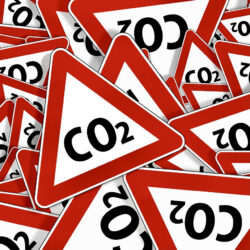CO2 emissions per parcel down 56% over last five years

The CO2 emissions of a parcel in the last mile have dropped by 56% compared to 2018, to an average of 100 grams. This is according to research by Thuiswinkel.org in collaboration with Topsector Logistiek and various carriers and online shops. The sector now aims to reduce last-mile emissions by 90% by 2030.
In 2018, the average emissions per parcel shipped were 230 grams. This has now decreased to 100 grams per parcel (-56%). “That is a very nice step. The decrease in CO2 emissions is mainly due to increased efficiency in the last mile. Think of more depots, more vehicles with lower emissions and smaller packages so that more parcels fit in the transport vehicles. And steps have been taken in the field of electrification and bicycle delivery,” says Marlene ten Ham, Director at Thuiswinkel.org.
“As the e-commerce sector, we want to get to grips with and reduce CO2 emissions from online order deliveries through collaboration. This research now shows that we are well on our way, but we can certainly still make improvements.” Herman Wagter, Programme Manager Topsector Logistiek, adds: “The e-commerce sector is showing great partnership here in continuing to improve the way CO2 emissions are calculated. This helps to make reductions effectively and also to include the consumer in this.”
Delivery to collection points not always better for environment
On average, delivery of a parcel to a collection point creates 10% lower CO2 emissions than home delivery. But it then depends on the consumer’s means of transport whether delivery to a collection point is actually better for the environment. Home delivery generates an average of 100 grams of CO2 emissions. Driving an average petrol-fuelled passenger car for 1km emits more, namely 204 grams of CO2 on average.
Ten Ham: “So having an online order delivered to your home often causes lower CO2 emissions than driving your own car to the collection point. TNO research shows that 33% of parcels delivered to a collection point are picked up by car. Our advice: pick up your parcel from a collection point on foot or by bike. If that’s not possible for whatever reason, it’s preferable to have the parcel delivered to your home.”
Further reduction of carbon emissions
The e-commerce sector aims to reduce CO2 emissions in the last mile by 90% by 2030. “This study shows that only a relatively small proportion of all parcels in the last mile are delivered with zero CO2 emissions. So there are still gains to be made here. We also look at transport before the last mile; we aim for more efficiency through smart data use and the use of more sustainable fuel. We also advise online shops to communicate more sustainable delivery options more clearly. Previous research showed that it is easy to encourage consumers to choose a more sustainable delivery option at the webshop’s checkout,” says Ten Ham.










